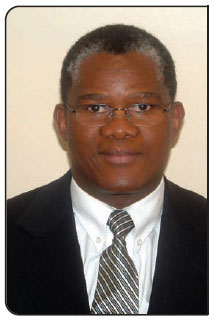Serviços Personalizados
Artigo
Indicadores
Links relacionados
-
 Citado por Google
Citado por Google -
 Similares em Google
Similares em Google
Compartilhar
SA Orthopaedic Journal
versão On-line ISSN 2309-8309
versão impressa ISSN 1681-150X
SA orthop. j. vol.9 no.4 Centurion Jan. 2010
MESSAGE FROM THE PRESIDENT
Orthopaedic training in South Africa
Orthopaedic training in this country has three phases. The first phase is undergraduate training, mostly in the form of formal lectures and a clinical component. It is taught mostly by 'spoon-feeding'. This training is very inadequate in our country as shown in research papers presented at the last SAOA Congress in Port Elizabeth. Three weeks of orthopaedic exposure in the final year is just not enough for a doctor who has to treat large numbers of patients with chronic orthopaedic conditions in addition to many patients involved in accidents and suffering other causes of injury. In our country 50% of all trauma is orthopaedic in nature. We, as teachers, will need to work hard to improve this situation.
The second phase is teaching a registrar to become an orthopaedic surgeon or a competent orthopaedic medical officer. All medical schools have good programmes to prepare registrars to become orthopaedic surgeons. The programmes are in the form of tutorials and compulsory reading - the student is challenged to prepare topics/seminars, read journals and present clinical problem cases. Of more importance is the fact that this training phase is in the form of an apprenticeship, where the student is assigned to a consultant and the technical expertise of the consultant 'rubs off' onto the student. In the end the student decides what he or she will take or reject from the expertise of the various consultants and from this a new surgeon is made.
The third phase is emerging in our country. We loosely refer to this phase as a 'fellowship'. It is the stage of super specialisation where the trainee surgeon works with the expert surgeon who specialises in one aspect of orthopaedics. Together they will then do specialised orthopaedic operations, read up on a specific topic and attend orthopaedic congresses geared to this topic. The surgeon may also want to broaden his/her knowledge by visiting experts in this field overseas.
It is comforting to know that whatever the orthopaedic need is, it can be attended to in our country, because of the super-specialists who have been trained here. Very few developing countries can boast this.
However, at the moment it is difficult to know where this super-specialist training is offered. You will hear from a friend that a fellowship is available at a certain centre. It would really help aspirant applicants if these fellowships could be advertised in the medical journals so that the young surgeons know where this training is offered. Our own SA Orthopaedic Journal is a good outlet for advertising these fellowships and indeed did advertise in the past when these fellowships were brought to its attention.
More importantly, I would like more input from these fellows and superspecialists at our Orthopaedic Congresses in the form of free papers, posters and participation in discussions. I appreciate their input in the instructional courses. I am sure the younger members of this association who are not members of a special interest group will value expert input in problematic cases treated by general orthopaedic surgeons. In this way the quality of our general orthopaedic congresses can only improve, just as the quality of our training will improve if the fellows and the super-specialists somehow get more involved in the training of our trainees in their own areas.

Prof Mthunzi Ngcelwane
President: South African Orthopaedic Association
Head: Department of Orthopaedics, University of Pretoria














